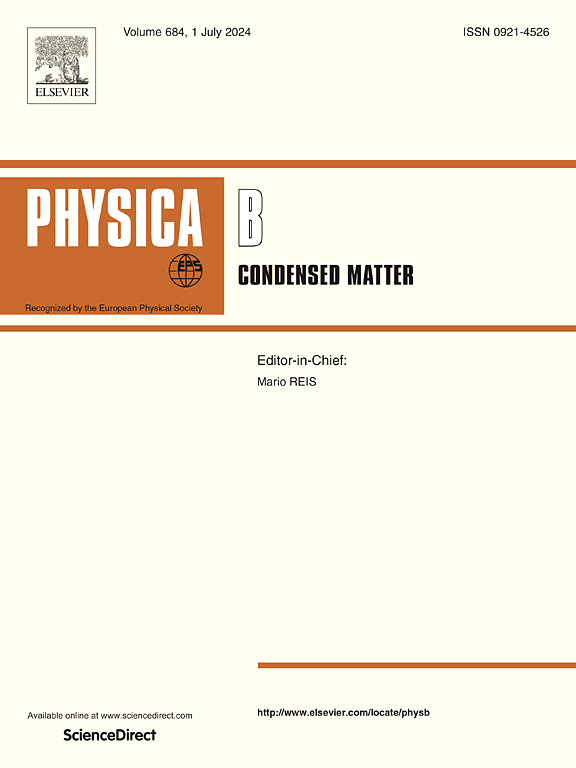Quantum insights into O-terminated transition metal carbides: Structural and functional perspective for energy solutions
IF 2.8
3区 物理与天体物理
Q2 PHYSICS, CONDENSED MATTER
引用次数: 0
Abstract
The class of two-dimensional MXenes, specifically transition metal carbides like XCO (X = Zr, Hf, Nb, Ta), shows significant potential for optoelectronic and thermoelectric applications. This study uses density functional theory (DFT) within the Wien2K code, with the Perdew–Burke–Ernzerhof (PBE) functional, to explore the structural and optical properties of these MXenes. Phonon dispersion calculations confirm the dynamical and thermal stability of the compounds, while detailed anisotropic analysis reveals significant in-plane and out-of-plane variations in optical and electronic behavior. All XCO compounds demonstrate hexagonal symmetry (space group: 194) and indirect band gaps, promising for photovoltaics and photodetectors. Optical evaluations cover the dielectric function, refractive index, extinction coefficient, absorption, reflectivity, and Surface Energy Loss Function (SELF) and Volume Energy Loss Function (VELF) analysis to characterize plasmonic behavior. Additionally, BoltzTraP models thermoelectric behavior, identifying temperature-dependent trends in thermal and electrical conductivities, the Seebeck coefficient, and the figure of merit (ZT). These results offer a comprehensive view of XCO MXenes, underscoring their potential in next-generation optoelectronic and thermoelectric applications.

求助全文
约1分钟内获得全文
求助全文
来源期刊

Physica B-condensed Matter
物理-物理:凝聚态物理
CiteScore
4.90
自引率
7.10%
发文量
703
审稿时长
44 days
期刊介绍:
Physica B: Condensed Matter comprises all condensed matter and material physics that involve theoretical, computational and experimental work.
Papers should contain further developments and a proper discussion on the physics of experimental or theoretical results in one of the following areas:
-Magnetism
-Materials physics
-Nanostructures and nanomaterials
-Optics and optical materials
-Quantum materials
-Semiconductors
-Strongly correlated systems
-Superconductivity
-Surfaces and interfaces
 求助内容:
求助内容: 应助结果提醒方式:
应助结果提醒方式:


